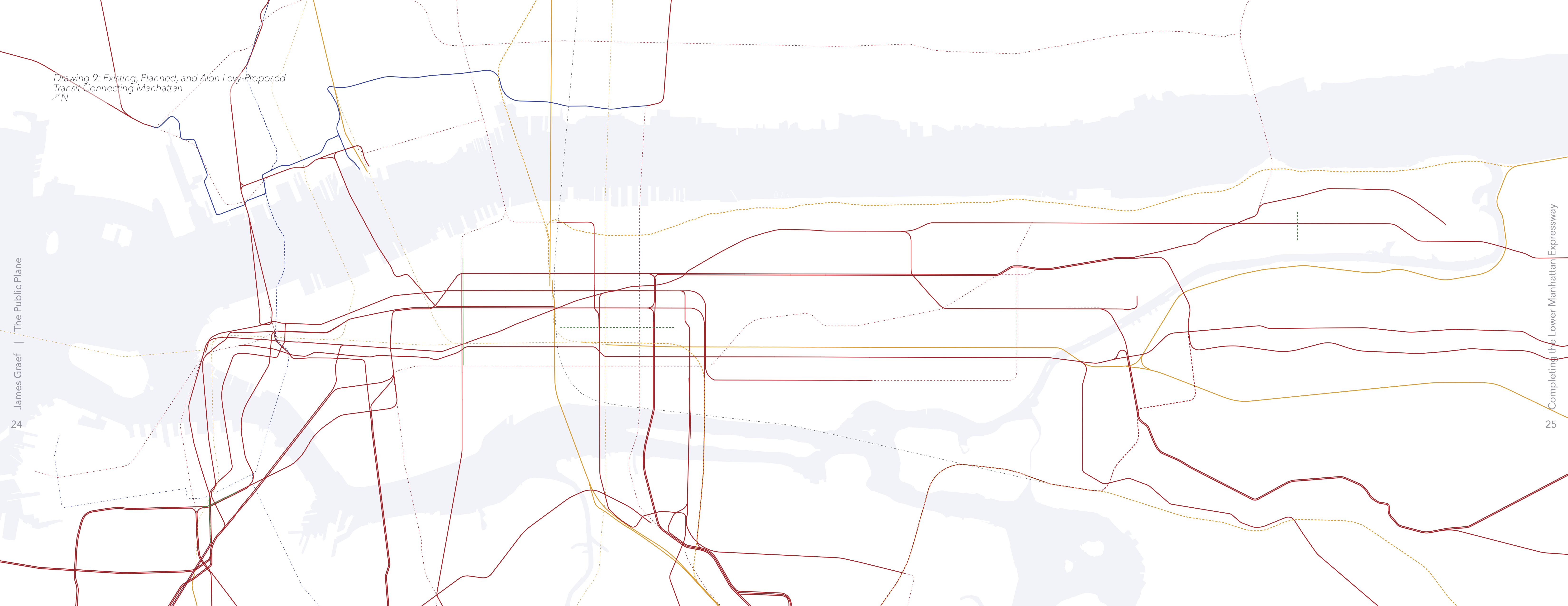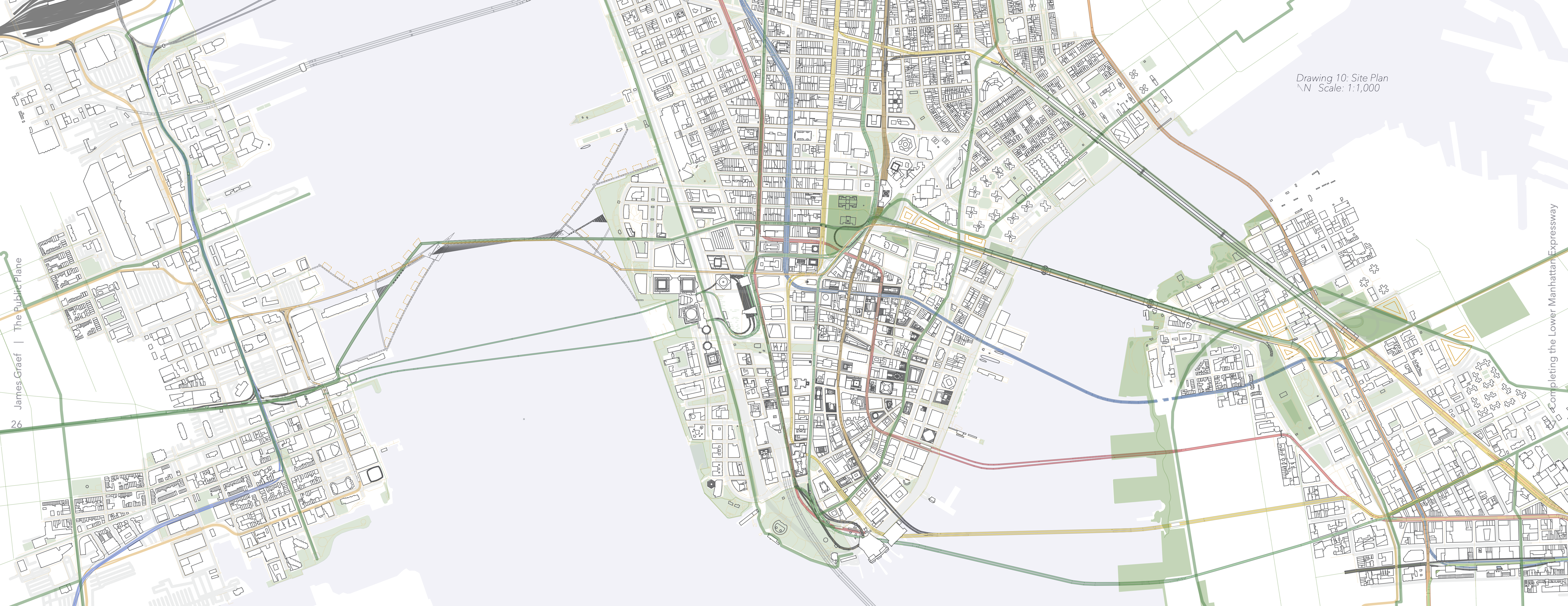Undergraduate Architecture and Honors Thesis | 2021
Stuckeman School; Schreyer Honors College | Darla Lindberg, Thesis Supervisor
After researching the physical and philosophical implications of the streets, sidewalks, and lobbies which comprise a city’s public plane, I proposed a bridge connecting Manhattan’s public plane to New Jersey to improve access and quality of life throughout the region. View the latest draft:
The public ground plane of a city is the catalyst for interpersonal interaction, but bypassing the public plane allows for much faster movement. Professional and casual designers of the public plane should balance these goals to create efficient, enjoyable, and equitable public space.

The public plane should stay as flexible as possible, though sometimes vertical connections must be designed to allow for movement—like a connection to a subway—or linkage—like a bridge.
There are only three rail connections and one pedestrian and bike connection across the Hudson connecting Manhattan’s public plane to that of New Jersey. A new pedestrian, bike and transit bridge between Jersey City and Lower Manhattan would better integrate the western half of the city with Manhattan, lowering the time and cost of crossing the Hudson, expanding tourism impacts, and increasing housing availability.

To truly stitch together the public plane, bridges should meet cities with webs of access points, rather than as spears—as in the Brooklyn Bridge—or mazes of highway ramps—as in the George Washington Bridge.
This bridge could be a catalyst for more connections over the Hudson and East Rivers—specifically the completion of the Lower Manhattan Expressway for pedestrians, bikes, and transit—and better alternative transportation networks throughout the city.
View the latest draft: